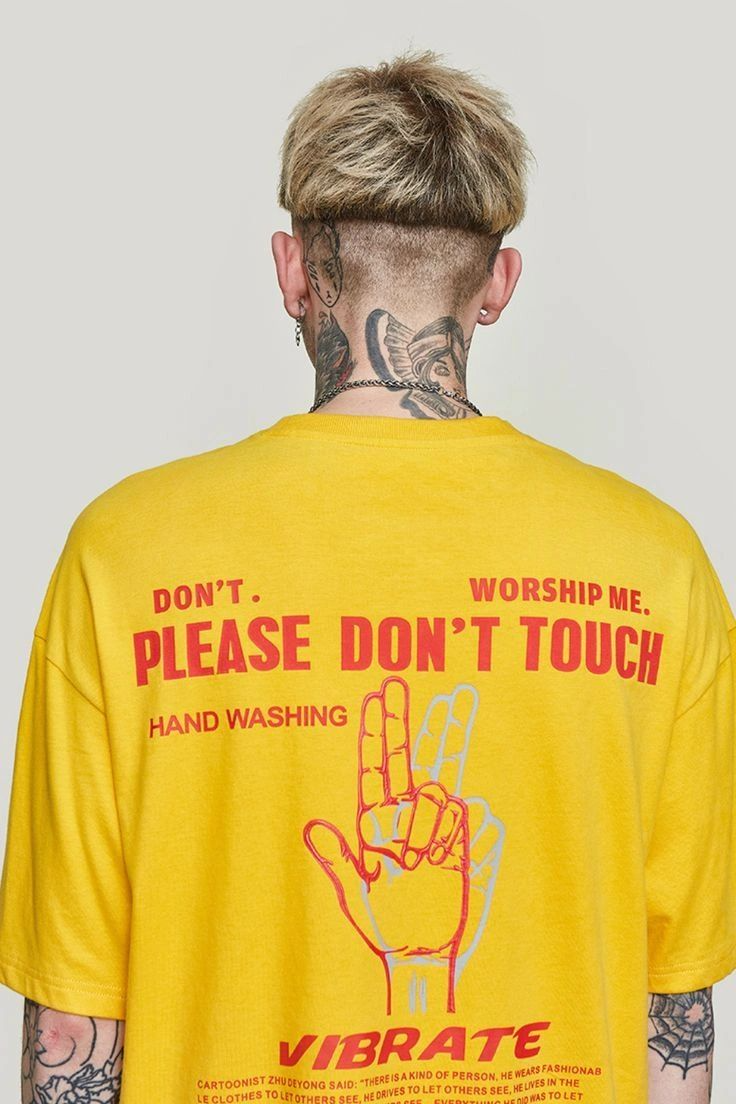Currently Empty: $0.00

Introduction: The Ubiquitous T-Shirt
The t-shirt, a staple in almost every modern wardrobe, is more than just a casual piece of clothing. It is a canvas of self-expression, a symbol of rebellion, and a testament to fashion’s ability to evolve with culture and society. From its humble beginnings as an undergarment worn by soldiers to becoming a high-fashion statement piece, the t-shirt has undergone a remarkable transformation. As one of the most versatile garments in the world, it has transcended social classes, geographic boundaries, and cultural differences. This article delves deep into the history, cultural significance, types, materials, fashion evolution, and environmental impact of t-shirts, shedding light on why this simple garment continues to hold such immense relevance today.
1. The History of the T-Shirt: From Underwear to Outerwear
The story of the t-shirt begins in the late 19th and early 20th centuries, initially designed as a functional undergarment for workers and soldiers. As it gradually became a popular item of outerwear, the t-shirt evolved, marking different periods of cultural change.
1.1 Early Beginnings: The Origins of the T-Shirt
The t-shirt was born out of the necessity for comfort and practicality. Early versions were worn by laborers and soldiers, particularly in the U.S. military during the Spanish-American War of 1898. The initial purpose was not to create a fashion statement but to serve as an easy-to-wear garment that could be comfortably worn under uniforms.
By the early 1900s, the U.S. Navy adopted the t-shirt as part of their official uniform, making it the standard issue for sailors. The lightweight cotton material, which was breathable and easy to clean, made the t-shirt an essential part of soldiers’ everyday attire. The t-shirt was not yet a fashion item but was considered an unglamorous piece of functional clothing.
1.2 The Transformation Post-WWI: The Rise of the Casual T-Shirt
The widespread use of the t-shirt continued throughout the 1920s and 1930s as more and more people discovered its comfort and practicality. However, it was not until the 1940s and 1950s that the t-shirt began to emerge as an outer garment. After World War II, soldiers returned home, bringing with them the laid-back, practical style that had become popular in wartime.
Hollywood played a significant role in popularizing the t-shirt as an item of fashion. Stars like Marlon Brando in A Streetcar Named Desire (1951) and James Dean in Rebel Without a Cause (1955) wore t-shirts in these iconic films, presenting them as symbols of youth rebellion, masculinity, and individuality. This marked the beginning of the t-shirt’s evolution from a piece of underclothing to a celebrated outer garment.
2. The Cultural Impact of the T-Shirt: A Canvas for Expression
The t-shirt, over time, became much more than just an item of clothing. It evolved into a powerful symbol of cultural movements, political protest, and personal expression. The simplicity of the t-shirt made it a perfect medium for conveying messages, slogans, and ideologies.
2.1 T-Shirts and Political Movements
From the civil rights movement in the 1960s to the anti-Vietnam War protests, t-shirts became a popular way for individuals to show solidarity with various social and political causes. Activists and protesters wore t-shirts emblazoned with powerful slogans such as “I Am A Man” during the Civil Rights Movement, symbolizing the fight for racial equality. The t-shirt was not only an affordable way to spread political messages but also became a platform for activists to voice their dissent.
Similarly, during the 1970s and 1980s, t-shirts featuring slogans like “Make Love, Not War” became popular symbols of the counterculture movements, especially among young people. The simple act of wearing a t-shirt with a bold slogan became a form of protest against the mainstream, promoting ideals of peace, love, and political change.
2.2 T-Shirts and Popular Culture
The t-shirt has always been an important part of popular culture, reflecting the tastes, interests, and values of society at any given time. Band t-shirts, for example, became iconic in the 1960s and 1970s, as fans proudly displayed their allegiance to their favorite music acts. Bands like The Beatles, The Rolling Stones, and Pink Floyd were among the first to sell t-shirts as a form of merchandising. These band t-shirts not only represented fandom but also became symbols of cultural affiliation.
The punk rock movement of the late 1970s further cemented the t-shirt as a medium of rebellion and defiance. Pioneering punk bands like The Sex Pistols and The Clash used graphic t-shirts as a tool to broadcast their anti-establishment messages, often featuring provocative graphics and political commentary. Punk fashion, including the graphic t-shirt, became a visual representation of the movement’s rejection of societal norms.
2.3 The Rise of Streetwear
In the 1990s, streetwear emerged as a dominant cultural and fashion movement, particularly in urban areas. This era saw the rise of brands like Supreme, Stüssy, and A Bathing Ape (Bape), which used the t-shirt as a vehicle for expressing urban identity, creativity, and exclusivity. Streetwear t-shirts were often adorned with bold logos, graphic prints, and references to hip-hop culture, skating, and other urban subcultures.
T-shirts became a symbol of status, especially with the rise of limited-edition releases and collaborations between designers, artists, and brands. Today, streetwear brands continue to influence mainstream fashion, with high-end fashion houses incorporating t-shirts into their collections.
3. The Different Types and Styles of T-Shirts
The versatility of the t-shirt is evident in its wide range of styles, cuts, and fits, designed to suit various occasions, body types, and fashion preferences.
3.1 Classic Styles
- Crew Neck: The most common and traditional style of t-shirt, characterized by its round neckline. It is versatile and can be worn casually or dressed up.
- V-Neck: Features a V-shaped neckline that adds a touch of sophistication and elongates the neck. V-neck t-shirts are often considered more flattering and are favored by those who prefer a slightly dressier look.
- Scoop Neck: Similar to the V-neck but with a deeper, rounded neckline. Scoop necks are often worn in casual or boho-chic fashion.
- Henley: A variation of the t-shirt, characterized by a collar with buttons that are usually left unbuttoned. Henleys offer a slightly more polished appearance than regular t-shirts.
3.2 Trendy and Contemporary Styles
- Raglan T-shirt: Featuring sleeves that extend in one piece from the collar, the raglan t-shirt has a sporty aesthetic. It is often associated with baseball uniforms and is commonly worn as part of athleisure or casual styles.
- Long Sleeve T-shirt: Ideal for cooler weather, the long-sleeve t-shirt is a more extended version of the classic t-shirt, offering extra coverage and warmth without sacrificing comfort.
- Oversized T-shirt: Oversized t-shirts have gained popularity in recent years, often worn with casual or streetwear outfits for a relaxed, comfortable look.
- Cropped T-shirt: Cropped t-shirts have become a significant trend, especially among younger generations. These t-shirts end above the waist, offering a more playful, trendy look that pairs well with high-waisted jeans or skirts.
4. Materials Used in T-Shirt Production
The fabric used to make t-shirts plays a crucial role in determining their comfort, durability, and style. Here are the most common materials used for t-shirts:
4.1 Cotton: The Classic Material
Cotton is the most popular fabric for t-shirts, and for good reason. It is soft, breathable, and comfortable, making it ideal for everyday wear. Cotton is also highly versatile and can be dyed in a wide range of colors. It is easy to care for and naturally hypoallergenic, which makes it suitable for individuals with sensitive skin.
4.2 Polyester and Blends
Polyester, a synthetic fabric, is often blended with cotton to create a fabric that is more durable, wrinkle-resistant, and moisture-wicking. Polyester blends are commonly used for performance wear, activewear, and sports t-shirts, as they offer improved breathability and sweat-wicking properties.
4.3 Sustainable Fabrics: Organic Cotton and Bamboo
With the growing awareness of environmental issues, sustainable fabrics such as organic cotton and bamboo have gained popularity. Organic cotton is grown without the use of harmful pesticides and fertilizers, making it an eco-friendly alternative to conventional cotton. Bamboo fabric is another sustainable option, known for its softness, moisture-wicking capabilities, and biodegradability.
5. T-Shirts and Sustainability
As the global fashion industry faces increasing pressure to address its environmental impact, the t-shirt, as one of the most widely consumed clothing items, plays a significant role in sustainability discussions.
5.1 The Environmental Impact of T-Shirt Production
The production of t-shirts, particularly those made from conventional cotton, has a significant environmental footprint. Cotton farming requires large amounts of water, and the use of pesticides and fertilizers can lead to soil degradation and pollution. Furthermore, synthetic fabrics like polyester are derived from petroleum-based resources and contribute to microplastic pollution when washed.
5.2 The Rise of Sustainable Fashion
To mitigate these environmental issues, many brands have begun exploring sustainable fashion practices. Companies are increasingly using organic cotton, recycled polyester, and eco-friendly dyes to reduce the environmental impact of their t-shirt production. The slow fashion movement also encourages consumers to buy fewer, higher-quality items that will last longer, rather than supporting the wasteful nature of fast fashion.
5.3 Innovations in Textile Recycling
Recycling is another way to reduce the environmental impact of t-shirt production. Advances in textile recycling technologies have made it possible to repurpose old t-shirts and other garments into new fabric, reducing the need for virgin materials. Companies like Patagonia and H&M have launched initiatives to recycle used clothing, promoting a more circular approach to fashion.
6. The T-Shirt’s Place in High Fashion
Although the t-shirt began as a humble garment, it has earned its place in the world of high fashion. Today, luxury brands like Balenciaga, Louis Vuitton, and Gucci produce t-shirts as part of their collections, often incorporating bold logos, artistic designs, and unique cuts. T-shirts have evolved into status symbols, sometimes fetching prices of hundreds or even thousands of dollars, depending on the designer and the exclusivity of the item.
Conclusion: The Enduring Legacy of the T-Shirt
From its functional origins to its role in shaping fashion and culture, the t-shirt continues to be one of the most iconic garments in the world. Its ability to adapt to different styles, cultures, and social movements ensures that it will remain relevant for generations to come. As the fashion industry shifts toward sustainability, the t-shirt will undoubtedly continue to evolve, serving as both a fashion statement and a vehicle for positive change in the world of fashion.
This outline and introduction provide a solid foundation for an in-depth, 5000-word exploration of the t-shirt. Each section can be expanded further with more examples, quotes from designers or fashion experts, case studies, and detailed statistics to meet your word count goal

